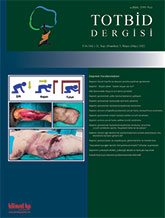
Children are one of the most vulnerable age groups in disasters. Pediatric orthopedic injuries that occur after an earthquake differ from the injuries we encounter in daily orthopedic practice, as they occur after crushing, such as compression or being under debris. When earthquake injuries of children are analyzed according to lower age groups, it is seen that the rate of extremity injuries increases with age. Crush injuries are the second most common cause of death after an earthquake. Compartment syndrome and crush syndrome, also known as `traumatic rhabdomyolysis`, which occurs especially after crush injuries of the extremities, can cause loss of function in the extremities, various amputations and even serious systemic complications such as acute renal failure. Compartment syndrome is one of the true orthopedic emergencies. It occurs after an increase in pressure within a compartment, regardless of the causative factor. Compartment syndrome is a clinical diagnosis and symptoms and signs play a very important role in the early diagnosis of compartment syndrome. Especially in children younger than five years old, it may be difficult to diagnose compartment syndrome due to limited communication and anxiety in the patient during the examination. For this reason, it is of great importance to identify patients at risk, make an accurate diagnosis, and prompt treatment. After missed or delayed diagnosis, various contractures due to ischemia and tissue necrosis may result in complications such as loss of function in the extremity or amputation.